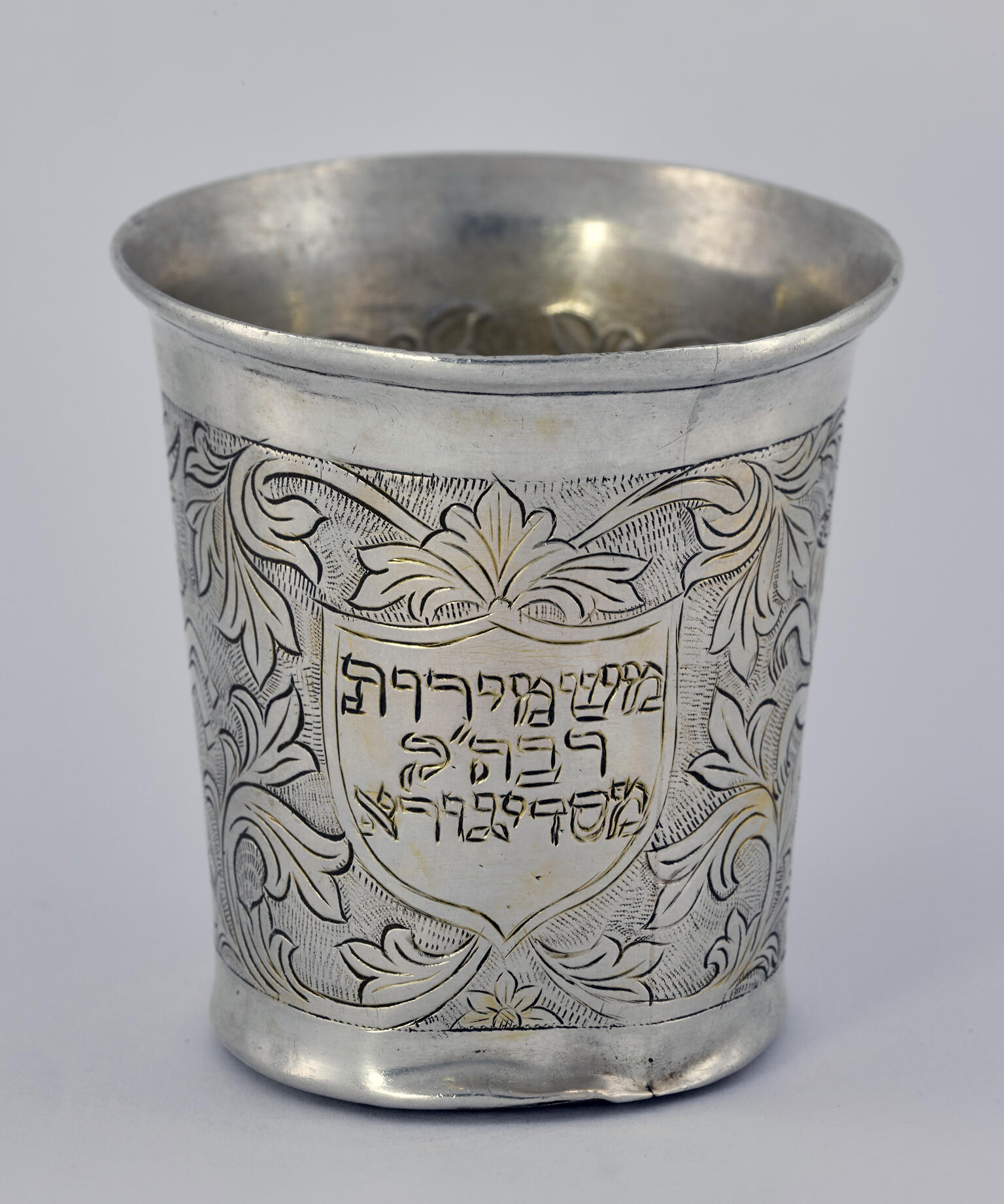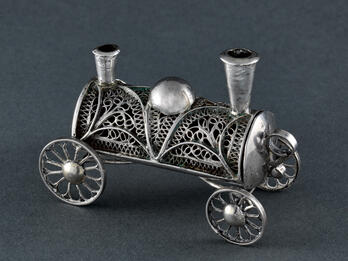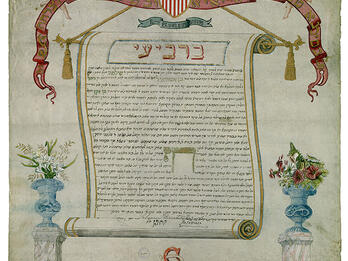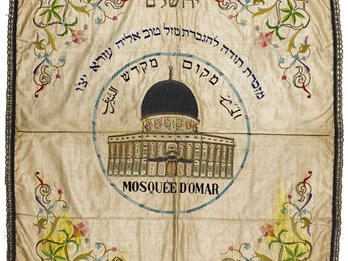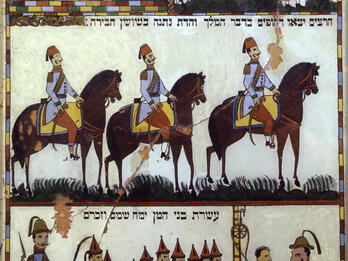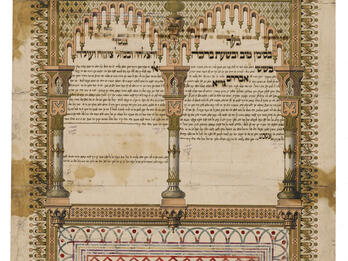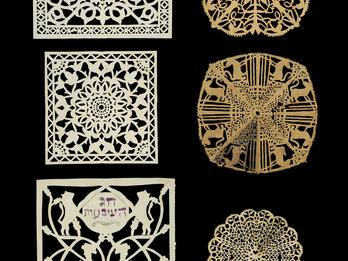Kiddush Cup (Sadigura)
In some Hasidic communities, it became a common practice for the Hasidic leader or rebbe to give specially sanctified coins as amulets that could confer blessings on the holder. These coins-turned-amulets were known in Yiddish as shmires (sing., shmire; Heb., shmirot; sing. shmirah). Over time, it became a common practice to recraft these shmires into sacred objects connected to Jewish ritual, such as kiddush cups or Torah crowns. These ritual objects sometimes included an inscription indicating that they had been made from shmires. Pictured here is a kiddush cup produced by followers of the late Yisrael Friedman of Ruzhin and later Sadigura, the Rizhiner/Sadegurer Rebbe (1796–1850); Ruzhiner Hasidim accorded especially great significance to their rebbe’s shmires. This kiddush cup is inscribed “Me-shmires [me-shmirot] rav ha-kadosh me-Sadigura” (From the shmires of the Holy Rebbe of Sadigura). The silversmith worked scrolling vegetation as well as images of a lion and a rampant unicorn around the inscription.
Credits
Published in: The Posen Library of Jewish Culture and Civilization, vol. 7.


